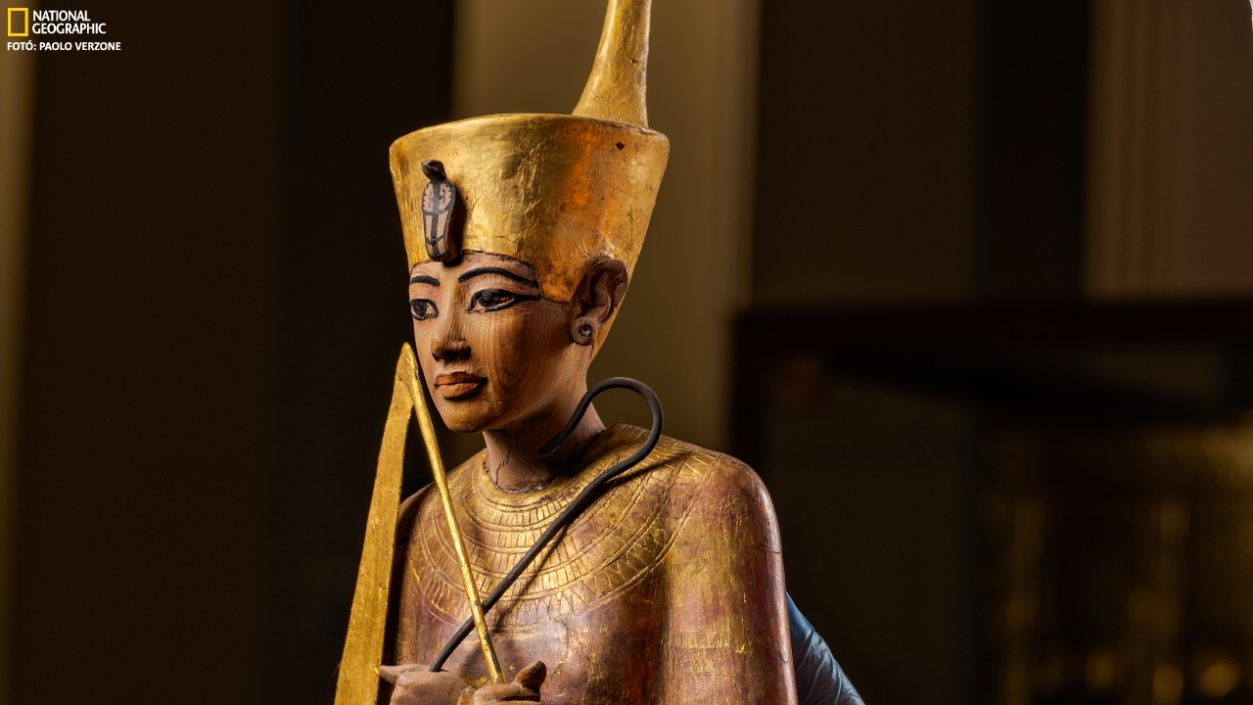by Tom Muller
Photo by Paolo Verzon
This is not what we imagine him to be a museum director, because he comes to his workplace in a camouflage suit and military boots. Major General Atef Moftah is not a typical museum director, but the Grand Egyptian Museum (abbreviated as GEM) is not a typical museum either. From afar, it’s a sprawling, postmodern complex. With its pointed shadow, it resembles a ship adrift in a sea of sand. As we get closer, we can see a ghoul pattern adorning its sides, which is in harmony with the shape of the pyramids of Giza, barely a kilometer and a half away. Major General Muftah, who holds a Bachelor of Engineering, is an erect man with a stocky stature, his hair cut, a fast walk, and a resolute man. However, his friendly smile and self-critical statements set him apart from spit-swallowing military leaders. Seeing his calmness, one would not even believe the heavy burden weighing on him.
secondly. The mummy of the boy was found in the tomb of Amenhotep, and it is being examined here by geneticist Yahya Gad (second from left) and his colleagues.
Source: PAOLO VERZONE

Salima Ecra, an Egyptologist and researcher at the American University in Cairo, examines a small coffin made for a mummified shrew. “The ancient Egyptians revered even the smallest animals because they believed that each had an important place in the universe,” he says.
Source: PAOLO VERZONE
The new museum is a prestigious government investment. Twenty years ago, they embarked on a huge business,
But due to the series of Arab Spring demonstrations and the coronavirus pandemic, it has been delayed for many years. Since Egypt’s economic performance largely depends on tourism revenues, and archeology is closely linked to politics, Major General Muftah and his men were given orders: If it collapses, if it collapses, the Grand Egyptian Museum must be a resounding success.
Muftah heads to the museum and lists its data: 45 thousand square meters of floor area,
Twelve showrooms, one hundred thousand artworks, construction costs more than one billion dollars.
“And it’s 99 percent complete,” he says with satisfaction. The museum is part of a series of large and amazing archaeological projects recently supported by the Egyptian government. For example, the Sphinx Street can be visited again in Luxor, and new museums have opened in Sharm El-Sheikh, Cairo, Gordaka and other places.
It was also funded by the state in April 2021 and called the “Golden Show of the Pharaohs”.
Splurge parade: Twenty-two royal mummies were placed on chariots reminiscent of ancient funeral arches and transported from the Ancient Egyptian Museum through the streets of Cairo with great fanfare to the newly opened National Museum of Egyptian Culture. The precious shipment was received by President Abdel Fattah El-Sisi and met with cannon shots. “The mummy procession attracted Egypt’s attention,” says Khaled El-Anany, a former Minister of Tourism and Antiquities. – He made us realize that we are all inheritors of a great culture and should respect our ancestors. As the Grand Egyptian Museum proposes this most effectively: pride, respect, unity and strength.”

Muhammad Mujahid, who is tasked with supervising the Saqqara pyramid complex of pharaoh Gedakari, considers the preservation of Egypt’s cultural heritage as his main task.
Source: PAOLO VERZONE
Previously, tourism and antiquities were handled by separate ministries, but in 2019 they were merged. More than one Egyptologist welcomed the decision with astonishment, saying that archeology would thus become a servant of tourism.
However, the Grand Egyptian Museum also has its critics. Some are rather afraid
GEM will benefit foreign tourists and not ordinary Egyptians. Aharon
They found the huge building ugly…
You can read the full article in the November 2022 issue of the magazine.












































